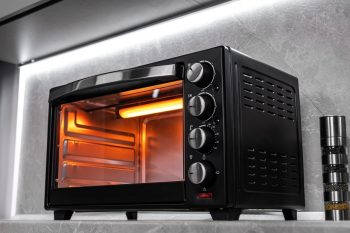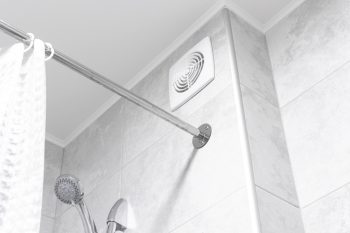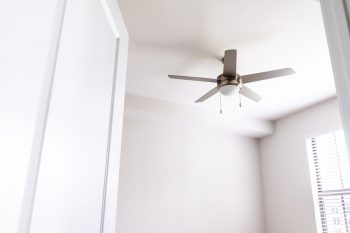
Selecting the right air conditioner for your space is a crucial task, as it directly impacts your comfort and energy bills. An oversized unit can lead to excessive energy consumption and humidity issues, while an undersized one may not cool your space sufficiently. This comprehensive guide will help you understand how to calculate the room size for an air conditioner accurately.
To calculate the room size for an air conditioner, first measure the room’s length and width in feet and multiply these to get the area in square feet. Then, multiply the room’s area by 20 to get the base cooling capacity in BTUs per hour. Adjust this base capacity for specific room conditions such as shading, sunlight exposure, number of occupants, and room type. For instance, if the room is heavily shaded, reduce the capacity by 10%. If the room is very sunny, increase the capacity by 10%. For each additional person over two, add 600 BTUs. If the unit is used in a kitchen, increase the capacity by 4,000 BTUs.
Understanding Air Conditioner Capacity
The cooling capacity of an air conditioner is measured in British Thermal Units (BTUs) per hour. Essentially, the BTU rating represents the amount of heat an air conditioner can remove from a room in an hour. The higher the BTU rating, the larger the space the unit can cool.
As a general rule, an air conditioner needs approximately 20 BTUs for each square foot of living space. However, various factors such as ceiling height, insulation, sunlight exposure, and the number of occupants can affect the required cooling capacity.
Measuring Room Dimensions
The first step to determining the right air conditioner size is to measure the room’s dimensions. Here’s how you do it:
- Measure the room’s length and width in feet using a measuring tape.
- Multiply the length by the width to get the room’s area in square feet.
For instance, if your room measures 15 feet in length and 10 feet in width, the area is 150 square feet.
Calculating Cooling Capacity
Once you have the room’s size, you can estimate the base cooling capacity. Multiply the room’s area by 20 to get the base cooling capacity in BTUs per hour. So, for a room of 150 square feet, you will need an air conditioner with a base capacity of 150 x 20 = 3000 BTUs per hour.
Adjusting for Specific Conditions
Several factors can influence the cooling capacity required. Here are some adjustments you may need to make:
- If the room is heavily shaded, reduce capacity by 10%.
- If the room is very sunny, increase capacity by 10%.
- If more than two people regularly occupy the room, add 600 BTUs for each additional person.
- If the unit is used in a kitchen, increase capacity by 4,000 BTUs.
Choosing the Right Air Conditioner Type
Different types of air conditioners vary in their room size requirements. Here’s a general guideline:
- Window air conditioners: Suitable for cooling individual rooms, these units typically have a cooling capacity ranging from 5,000 to 12,500 BTUs.
- Portable air conditioners: These units have a cooling capacity between 8,000 and 10,000 BTUs, ideal for rooms measuring 200 to 300 square feet.
- Central air conditioners: Designed to cool an entire house, these systems have a much larger cooling capacity, averaging between 20,000 to 50,000 BTUs.
Common Mistakes to Avoid
When calculating room size for an air conditioner, avoid these common mistakes:
- Relying on rules of thumb: Actual cooling loads may vary due to several factors, so it’s best to calculate your specific needs.
- Ignoring room conditions: Room shading, sunlight exposure, and the number of occupants can significantly affect the required cooling capacity.
- Not adjusting for specific room types: Rooms like kitchens generate more heat, requiring a higher cooling capacity.
Conclusion
Choosing the right air conditioner size is essential for optimizing performance, energy efficiency, and comfort. Accurate calculation of your cooling needs will help you select a unit that’s just right for your space. For a more precise calculation, consider using an online BTU calculator or consult with an HVAC professional. Remember, a well-sized air conditioner is an investment towards a comfortable and energy-efficient home.
Frequently Asked Questions
What is a BTU and why is it important in air conditioning?
BTU stands for British Thermal Unit. It is a unit of heat energy and is used to describe the power of heating and cooling systems, such as air conditioners. In the context of air conditioning, a BTU is the amount of heat that an air conditioner can remove from a room per hour. The higher the BTU, the greater the cooling capacity of the air conditioner.
Can I use the same air conditioner for different room sizes?
Not necessarily. The cooling capacity of an air conditioner needs to match the size of the room for optimal efficiency and comfort. An air conditioner that’s too powerful for a small room will cool quickly but may not dehumidify properly, while an undersized unit for a large room may struggle to cool effectively.
How does the number of occupants in a room affect the cooling capacity needed?
Each person in a room adds to the heat load because our bodies naturally generate heat. Therefore, if more than two people regularly occupy a room, you should add 600 BTUs to the base cooling capacity for each additional person.
What type of air conditioner is best for a large open plan living area?
For large open plan areas, a central air conditioner is often the best choice. These systems have a larger cooling capacity, typically between 20,000 to 50,000 BTUs, and are designed to cool an entire house.
Why do I need to adjust the cooling capacity for specific room conditions?
Room conditions like shading, sunlight exposure, and the type of room (e.g., kitchen, living room) can significantly affect the heat load in the room. Adjusting the cooling capacity based on these conditions ensures your air conditioner works efficiently and maintains a comfortable room temperature.











